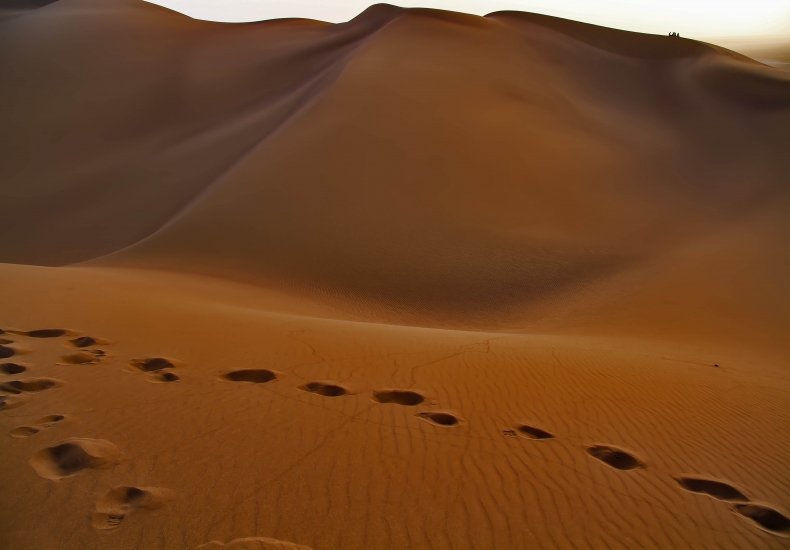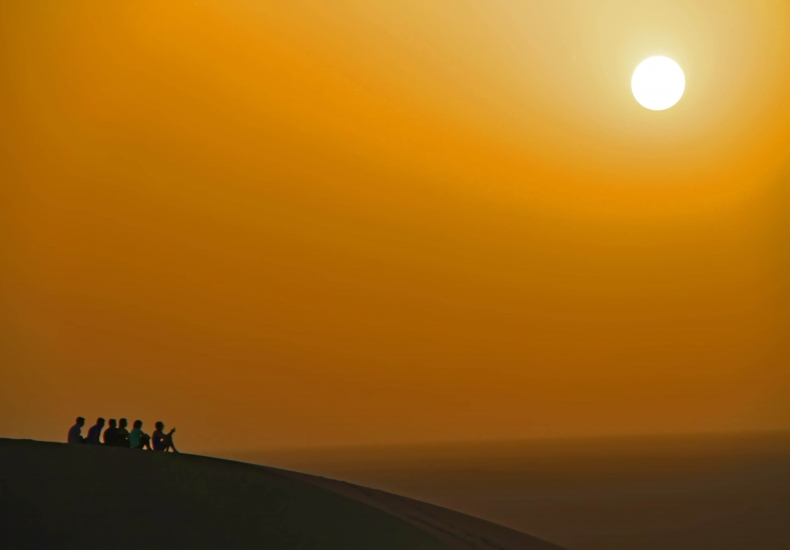Yes! We’re talking about a desert as a Iran tourist attraction, and to answer those who might ask if a dry sandy landscape can rank top on the list of things to do in Iran, then we must repeat our answer which is a yes! As we virtually and briefly walk you through the desert of Maranjab, we will be unintentionally driving you to plan a trip to Iran to see this for yourself. But then again, at the end of this introduction we will let you decide.
There is a desert located in northern environs of Aran-Bidgol city of Isfahan province, called Maranjab desert of Aran-Bidgol, which has obviously taken part of its name from the city.
This desert is bordered with Aran-Bidgol salt-lake to the north, to the west with Masileh desert and Hoze Sultan (Sultan’s Pond) salt lakes, to the east with Band-e-Rig desert, to the south with Kavir National park and preserve, and to the south with Aran-Bidgol city.
Maranjab desert has an average altitude of 850 m from sea level.
Relative safety and security, diversity of animal species and vegetation specific to desert areas, have provided a suitable environment in terms of tourism and investment.

Richness in water and food, has resulted in diverse wildlife. Here are some of the species you might see: wolves, jackals, hyenas, sand foxes, sand cats, and various types of lizards, chameleons, snakes, scorpions, dull-yellow partridges, eagles and hawks. A pair of cheetahs have been witnessed in Maranjab area. According to locals currently 21 collars of cheetahs exist in Maranjab.
Maranjab name was chosen by one of the Safavid kings of Iran, Shah Abbas. The interesting fact about that is, he did that unintentionally. He was constructing caravanserais in every road and in every city, and it never crossed his mind to build castles in a borderless desert of Maranjab. But as soon as he was informed of the arrival of Tajiks and Afghans to Isfahan and central parts of Iran, the Safavid king felt the need to build a military castle guarded with 500 soldiers, on a road connecting Europe to China known as the Silkroad. Originally Maranjab desert has taken its name from this Caravanserai and an aqueduct gushing freshwater out of itself.
Maranjab desert is considered one of the most beautiful deserts of Iran. Saxaul forests and high sandy hills have added to the breathtaking view of this area. Salty lake of Aran-Bidgol and the Wandering island (Persian: Jazireh sargardan) are the places you must not miss during your Maranjab desert touring. The interesting fact about the Wandering Island is that other than the rainy months of the year, this island turns to a salt marsh. To the east of the desert, you can find an ancient well which has been a water place for the camels.
Maranjab castle is a caravanserai which is on the route of Silkroad, where caravans used to pass here on their way to Isfahan, Khorasan, Rey and also on their way back.
Rig- Shaq desert area is connected to Band-Rig sabulous and forms the northern desert area of Badrood city. The tallest sand hill in Band-Rig is 70 meters high.
The sand hills are the main attractions of Maranjab desert. Regarding the Korshahi castle and wandering island and the reason why it was built next to a salt lake, it has been quoted that, despite the fact that the Safavid King, Shah Abbas, had built many caravanserais and castle in different parts of Iran, he had not thought of building defensive installations, because up until that time the enemies had not been able to invade the capital from this direction because of the salt lake and the vastness of the desert. Upon the Uzbek and Afghan invasion to the capital via the salty lake, Shah Abbas, were compelled to build a military base in the area, in 1603 (1012AH) to avoid the threat. On top of the caravanserai you can see garrets, and soldiers would guard the caravanserai from up there.
Gushing water from the aqueduct, has made a sweet water pond. This is quite a rare phenomenon in this desert, which has amazed the scientists. Maranjab caravanserai is located at the heart of Maranjab desert, the desert itself is located 810 meters from sea level, bordered with southern part of Qom Lake to the north. Two salty and sweet water springs provide the water for the pond outside of the castle. These two freshwaters surface with each other.

There are 3 different routes to the desert, which are as follows:
1. Starting from Pishva, to Mobarakie (15 km) , Qasr Bahram (60 km) to Sefid-Ab caravanserai (80 km) and 50 km to Maranjab. Note that this route requires permission from Environmental Protection Agency.
2.The route from Aran-Bidgol to Abu-Zeid-Abad and then Sefid-Ab caravanserai to Maranjab
3.From Aran-Bidgol to the arny garrison, then taking a road which leads to Maranjab after 45 kms.
On a final note, going to Maranjab desert requires taking a Iran tour package, specially an Iran adventure tour package.
For adventure lovers and those who are interested in different type of tourism, visiting places such as Maranjab Desert is very interesting amusement. Deserts in Iran always offers very good activities such as sand hiking, desert safari, camel riding and star watching during the night. Due to the location of this desert, visiting this desert can be accompany with classic visit to Kashan and its beautiful sights.
Iran Negin Travel, as an Iran tour operator, provides a wide range of services to tourists who want to travel to Iran and have a nice time. Through our Iran tours packages, each sightseeing can be included upon the travelers request. Our Iran tours, especially Iran cultural tours and Iran adventure tours, cover this special desert in Iran.
Contact us and get the best promotions for Iran tourists services and Iran tours packages.